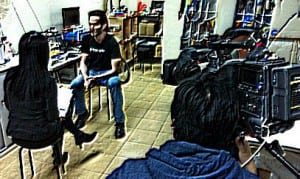
Your CEO is about to go on live TV to talk about the company’s performance. It could get contentious. Is she prepared? What have you and your team done to ensure the message gets communicated? If your company’s top managers (or your client) doesn't look polished or speak well, all of the great messaging you perfected instantly loses value and the company’s credibility suffers.
At a PR News Media Training Workshop, Jerry Doyle, senior consultant and principal at CommCore Consulting Group, took attendees through the famous Albert Mehrabian study, Silent Messages.
Mehrabian identified "the three V’s" (verbal, vocal and visual) that influence the how a person is perceived and liked. He found that visual—a person's body language and what they're wearing—accounted for 55% of that influence. Vocal—the way your voice sounds, it's pace and volume—held second place, with 38%. Verbal—the words you choose to use—trailed far behind at 7%. Long story short, Mehrabian found that non-verbal cues hold much more interpretive weight than the literal meaning of the words themselves.
"Content is still the most important thing you and your client bring to an interview," said Doyle. "But without the support of the visual and the verbal, you're losing the power of the value you're delivering."
For example, if an executive spends an afternoon with a reporter from The Wall Street Journal, but the interviewer is distracted the whole time by the way that executive carried herself, that's a real missed opportunity.
"Media training is not about becoming a showman," Doyle said. "It's about making sure you don't accidentally deplete the power behind your message."
Follow Lucia Davis: @LKCDavis.
